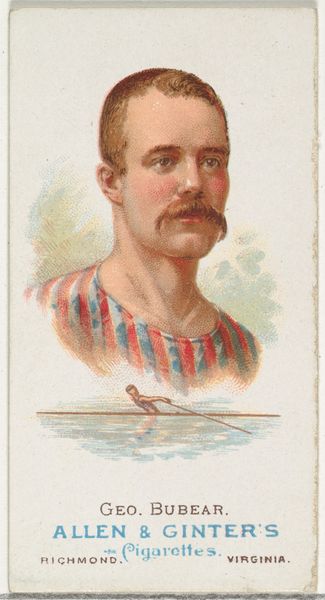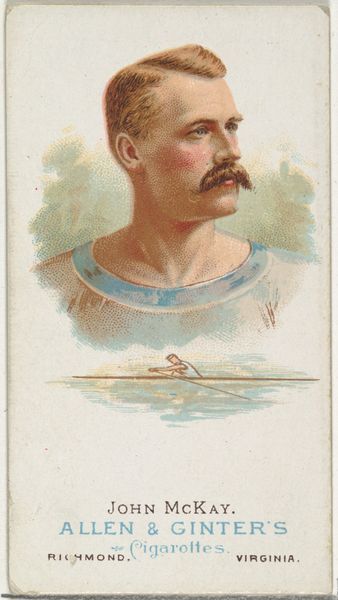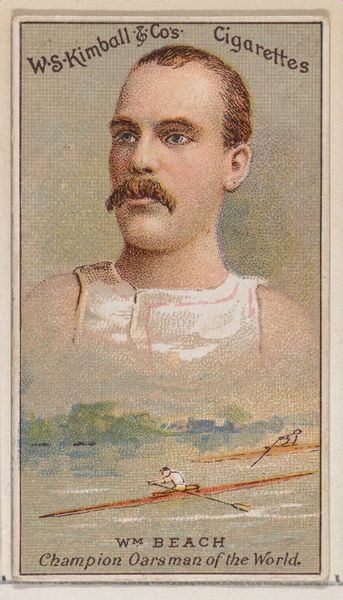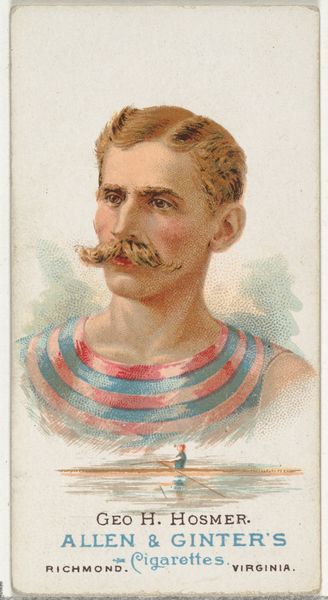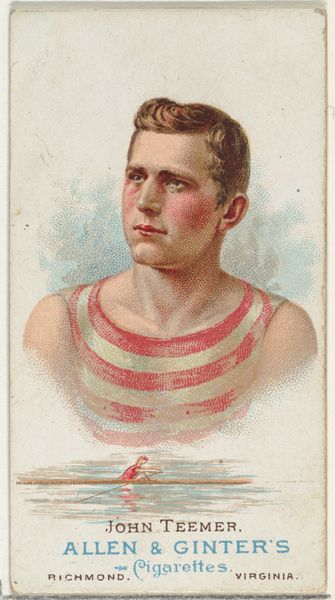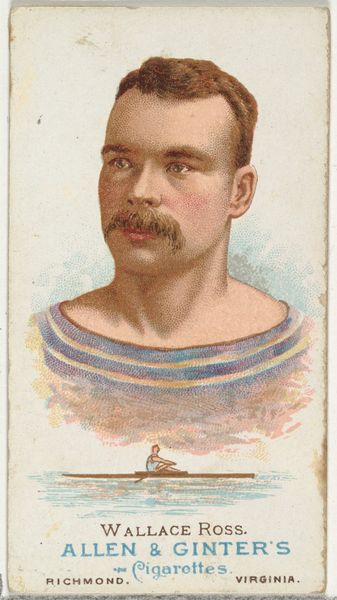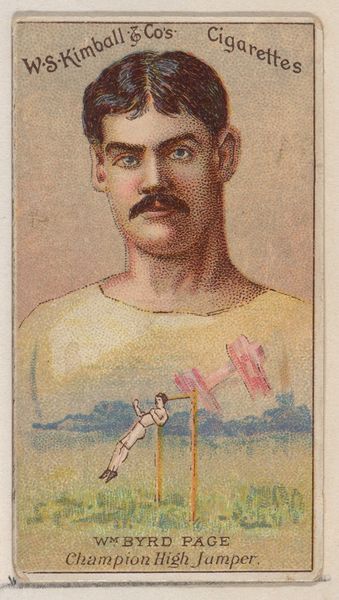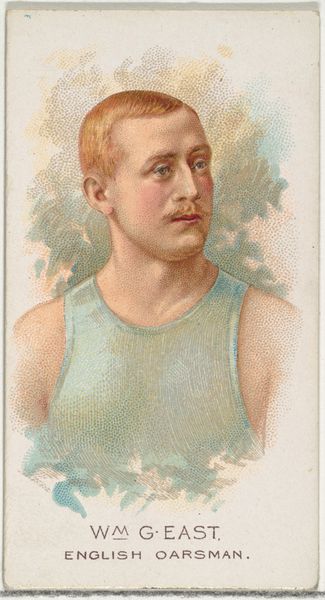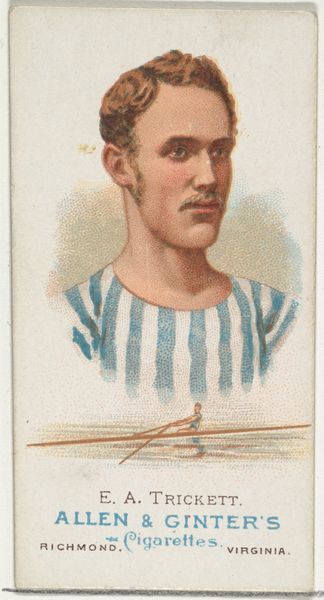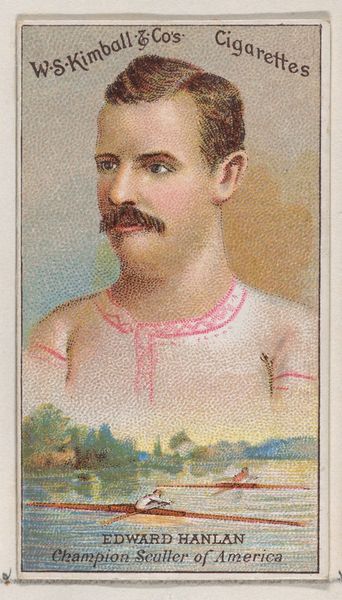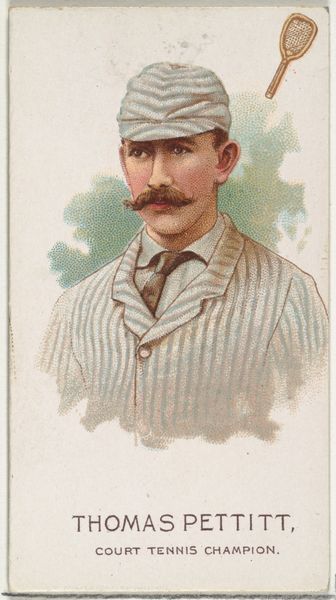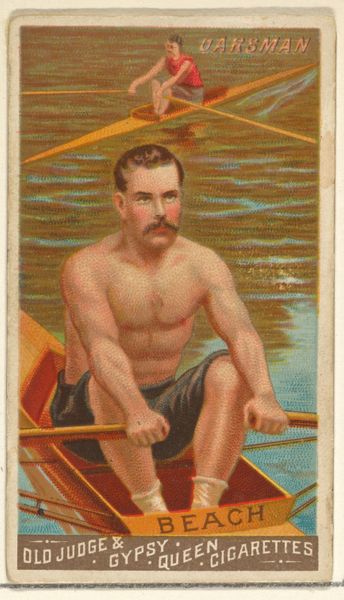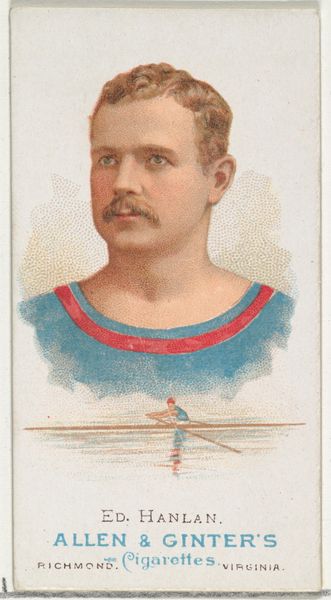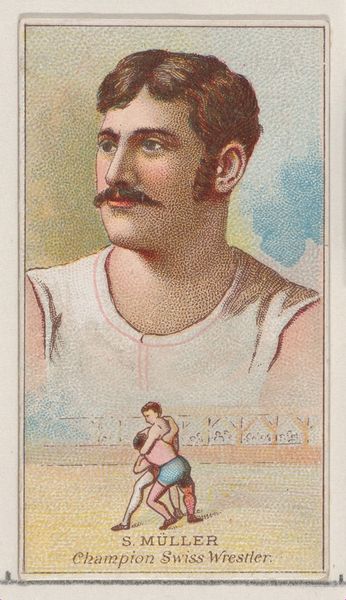
Albert Hamm, Oarsman, from World's Champions, Series 1 (N28) for Allen & Ginter Cigarettes 1887
0:00
0:00
drawing, print, pencil
#
portrait
#
drawing
# print
#
impressionism
#
caricature
#
coloured pencil
#
pencil
#
men
#
genre-painting
Dimensions: Sheet: 2 3/4 x 1 1/2 in. (7 x 3.8 cm)
Copyright: Public Domain
Curator: Look at this portrait. It’s "Albert Hamm, Oarsman," from the World's Champions series created around 1887 by Allen & Ginter, initially distributed as collectable cards with their cigarettes. The medium here seems to blend drawing and printing, with both pencil and coloured pencil adding their delicate touch. What’s your initial take on it? Editor: There's something endearingly old-fashioned about it, almost wistful. It’s more illustration than pure portraiture; the colors are soft, and there's a sweetness, a rosy-cheeked ideal of athleticism, that feels very particular to the era. Curator: Precisely. And the symbolism works on multiple levels. Water often represents purification or the subconscious. An oarsman confronts it head-on. In the late 19th century, with burgeoning industrialisation, sporting heroes evoked notions of a healthy physique and wholesome dedication—antithetical to urban decay. Editor: Absolutely, that push for physical culture. The striped shirt alone speaks to a certain kind of masculine display that’s both playful and a bit theatrical. It’s fascinating how such a simple image can evoke an entire cultural moment. Note the miniature of the man rowing as if emerging from behind his head. Curator: Ah yes, in the composition, that tiny figure is compelling— almost like an ego figure behind the "true" self in the foreground, performing out on the water while the headshot captures Hamm's outward facing public image. It's quite Freudian now that you point it out! Editor: It's more than advertising; these cards embedded social ideals, packaging them with a nicotine fix. We tend to forget, visual cues—the mustache, the cropped hair, all spoke volumes about masculinity. The pose almost becomes a kind of symbolic action itself. Curator: Right, the symbols were part of shaping the ideals it tried to embody! It makes one wonder if Hamm really ever gazed this idealised. We see how image construction plays with reality even back then. This card, while simple, gives a complex commentary about sports, body and advertising culture. Editor: Definitely, and unpacking all of that embedded meaning is more than just history—it illuminates how we still perform ideas today, using images to tell a story, true or not. A little treasure about identity packaged with cigarettes!
Comments
No comments
Be the first to comment and join the conversation on the ultimate creative platform.
